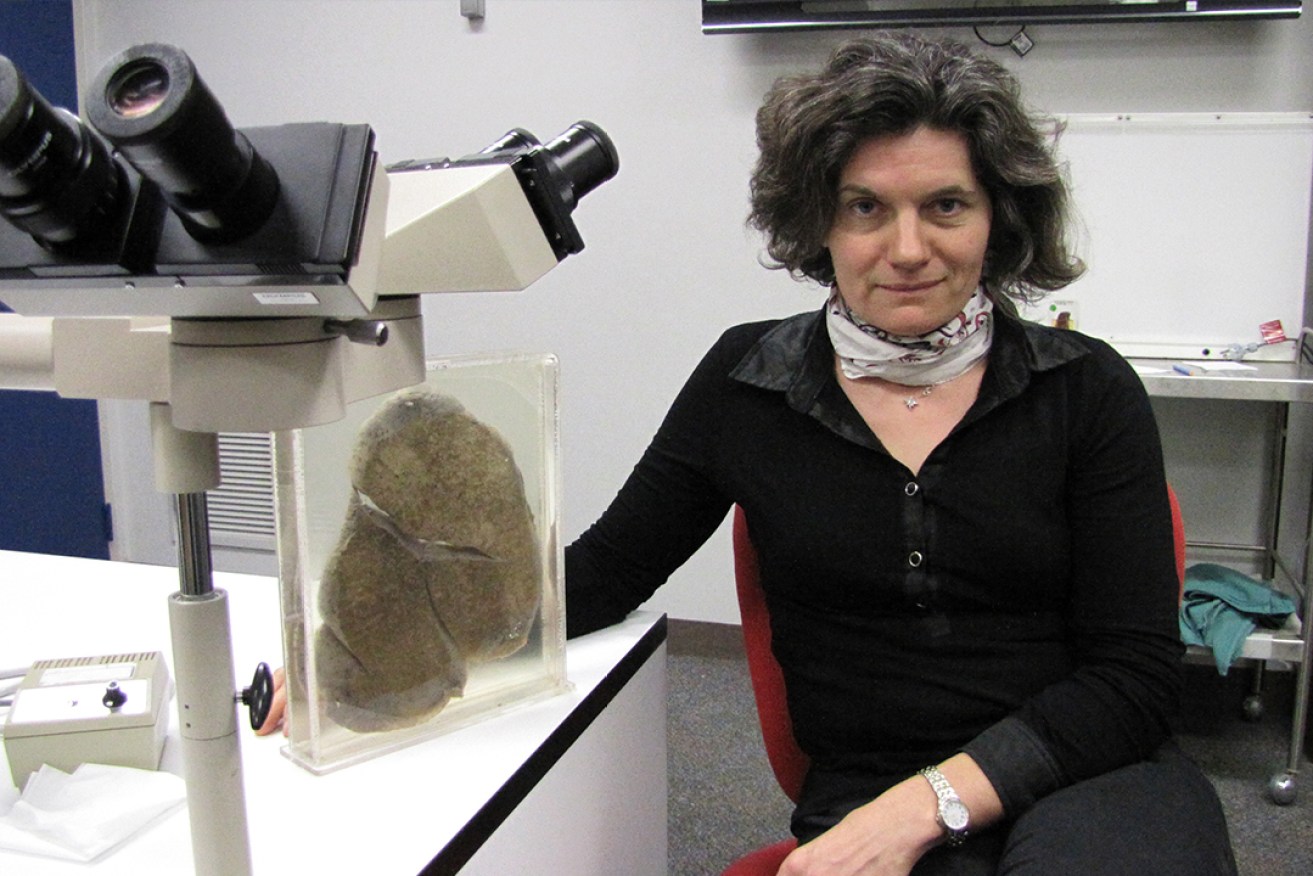Copycat cells propel asbestos disease: research
The cells of malignant mesothelioma, a tumour caused by asbestos, can promote their own growth by changing themselves into blood vessels, new research led by Flinders University has found.

Oncology researcher Associate Professor Sonja Klebe in the pathology laboratory at Flinders University’s School of Medicine. Body
The discovery of this ‘vascular mimicry’, as demonstrated in patient samples and animal models, sheds new light on future approach to medical and therapeutic intervention including anti-angiogensis in combination with chemotherapy and immunotherapy.
With no cure in sight, and short life expectancy in advanced mesothelioma, the development of more targeted and less intrusive therapies is very important to patients’ quality of life, researchers say.
“All tumours need blood supply and standard anti-angiogenic drugs which aim to stop tumours from recruiting blood supply from the surrounding stroma do not dramatically improve survival in mesothelioma patients,” says Associate Professor Sonja Klebe, from Flinders University’s School of Medicine.
“By targeting these tumour-derived vessels, we might be able to improve our therapeutic approaches, while also reducing some of the worst side-effects, by switching our focus to inhibiting both vascular mimicry alongside conventional vessel growth.”
Australia has the highest reported per-capita incidence of asbestos-related disease in the world, including the highest incidences of mesothelioma.
In 2012, 652 Australians died from mesothelioma. It is estimated that for every death attributed to mesothelioma two more people die from lung cancer caused by asbestos.
According to the National Strategic Plan for Asbestos Management and Awareness 2014-18, it is predicted as many as 25,000 Australians will die from mesothelioma over the next 40 years.
Associate Professor Klebe is investigating the use of alternative and natural therapies, such as curcumin (the main component of the spice turmeric) in targeted and localised treatments, particularly in combination with chemotherapy, immunotherapy, surgery and other therapeutic approaches.
“We are striving to tackle the patients’ tumours while minimising or relieving the worst side effects of treatment,” she says.
Despite a ban on using asbestos, she warned against complacency in not using safety equipment to remove asbestos in private residences.
Associate Professor Klebe presented on her latest mesothelioma research at the 2016 Asbestos Awareness and Management International Conference in Adelaide this month.
The research paper, Vasculogenic mimicry in malignant mesothelioma: an experimental and immunohistochemical analysis, by E Pulford, A Hocking, K Griggs, J McEvoy, C Bonder, DW Henderson and S Klebe – from the Department of Anatomical Pathology at Flinders University; Centre for Cancer Biology (University of SA), SA Pathology and School of Medicine (University of Adelaide); and SA Pathology at Flinders Medical Centre – has been published in Pathology Journal of Australasia.
For more information: www.asbestossafety.gov.au





